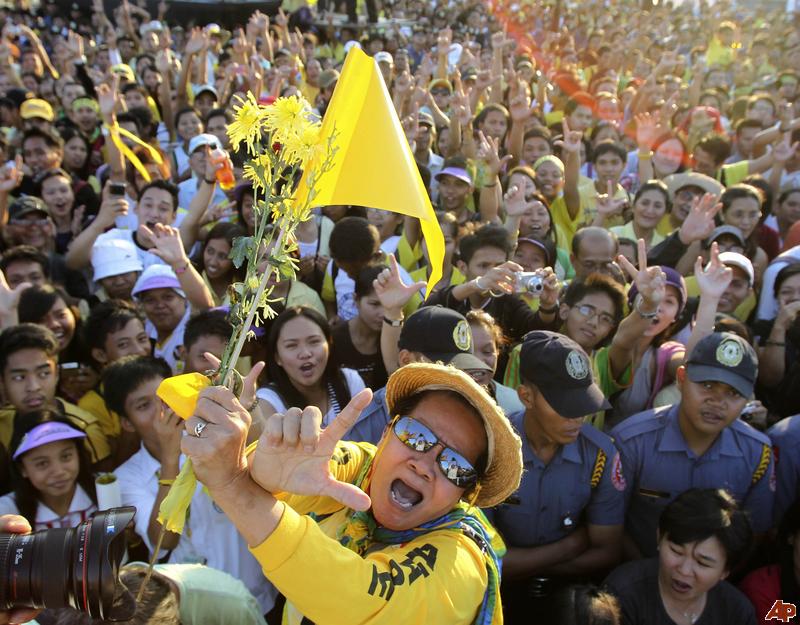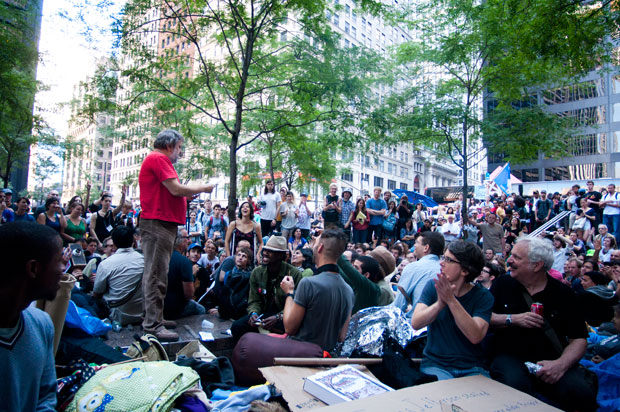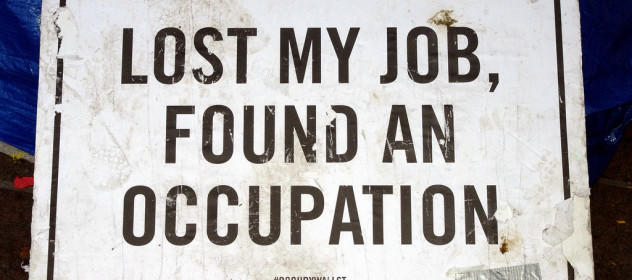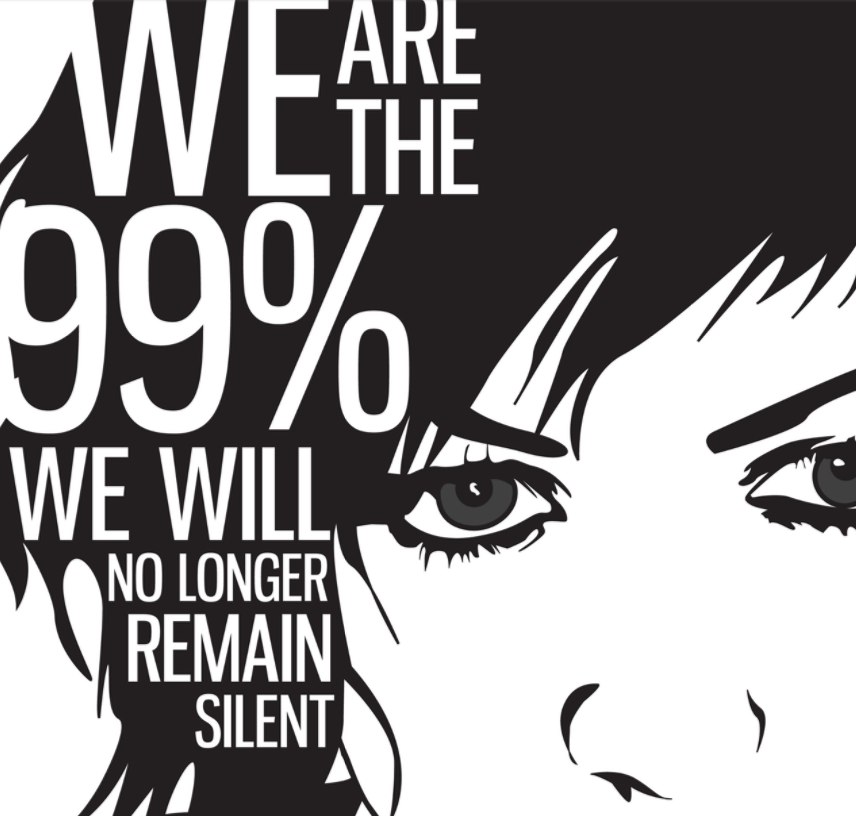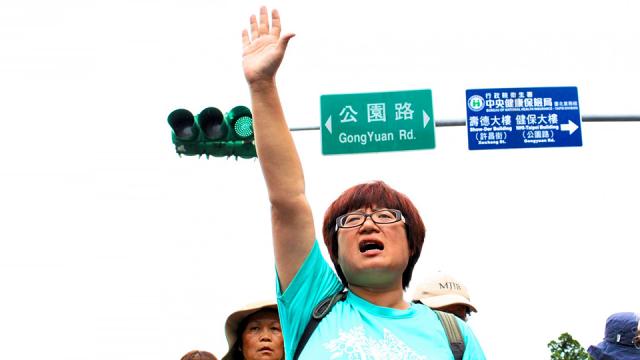
In our last article, “Major Social Transformation Is a Lot Closer than You May Realize,” we defined where today’s social-political movement is within the eight stages of successful movements. We have passed the “Take-Off Stage” (Stage 4), gotten through the “Perception of Failure” (Stage 5) and are in the phase of “Building Majority Support” (Stage 6) which is the last stage before “Victory.” In this article we delve deeper into the tasks of the movement in this stage and apply those tasks to current issues faced today.
In this stage, which can take many years, the primary task of the people-powered social movement is to build national consensus through broad and deep grassroots organizing. The power holders are currently in a crisis management mode. They continue to defend their policies while shifting positions and taking countermeasures to undermine people power. During this stage public opinion is shifting, majorities oppose the current situation and are beginning to see that new alternative solutions must be put in place. People-powered activists are in a battle with the power holders for the hearts and minds of super-majorities of the people.
We ended our last article with a key point that we need to highlight here: our goal is to build a mass movement, which has the support of super-majorities of Americans and has mobilized up to 3.5% of the population. Therefore, the target of our protests is not the government or a corporation, the target is the people: to educate and mobilize them. We want to show that there is an effective movement speaking to the people’s concerns and putting forth views that they support. We protest the power holders to expose their actions but do not expect them to be capable of addressing our concerns adequately in this stage.
Build Unity Around the Values of the Movement
The foundation of the current phase is massive public education and building support in all segments of the population for the values of the movement. This is done through grassroots organizing involving constant outreach to friends, neighbors and family – the local community. In these conversations, people gain a greater understanding of how the problems of the present system affect them; how the present system violates their values and principles; and how it is in their own self-interest to do something about it.
This is happening now; one example is the low-wage worker movements. While workers and their allies participate in resistance actions like one-day walkouts or mass protests on key shopping days like the Black Friday’s protests at 1,500 Walmarts, members of the community are joining in solidarity. People are learning that when a corporation provides poverty-level pay to a worker, we all subsidize that policy through food stamps, Medicaid and housing subsidies. The Walton family and Walmart executives (as well as other poverty paying corporations) make massive profits because of worker-subsidies from all of us. And, paying workers an inadequate wage for their labor violates our values.
While these corporations continue to refuse to change their policies, even though they could afford to and would benefit from doing so, the power holders are responding as expected at this stage with inadequate solutions. The movement has forced 13 states to increase the minimum wage in 2014 which will affect 2.5 million people. This is not a complete victory because no state is putting in place a real living wage. And, in the one place that voted for the movement’s demand, a $15 per hour wage, it is being challenged in court. The struggle must continue. It is not acceptable for workers to still be poverty workers, though some will have less poverty.
Whenever we push to solve current problems, the movement should also put forward a vision of a paradigm shift. When it comes to workers, one shift is to make workers into owners and decision makers in worker-owned businesses, like cooperatives so they can share the wealth they help to create. More existing businesses are being converted to worker-owned businesses and there is a growing worker-cooperative movement. And it is important to link the problems of underpaid workers to the broader economic problem of the wealth divide and build support for the many solutions to that problem.
Exposing the Myth and Explaining the Reality
An important task of the movement is to expose the difference between ‘official policies’ and ‘actual policies.’ That is, what the power holders say they are doing and what the policies actually do, which are often the complete opposite. Every government policy put forward by either of the two corporate-funded parties is designed to help their funders, not the people.
For example, the public is told that we are going to war for democracy or for ‘humanitarian’ reasons, not for resources for corporations. Another example is the ‘all of the above’ energy policy which is said to address climate change and create energy independence but actually does neither while lining the pockets of Big Oil and Gas. On issue after issue there is a discrepancy between the official policies and the actual policies. One of our key jobs is to separate myth from fact, so people understand what is going on around them. Groups like Wikileaks and whistleblowers like Chelsea Manning, Jeremy Hammond and Edward Snowden are doing critical work in exposing the myths by leaking documents that make it undeniable what the government is really doing.
We are going to be seeing myth in hyper-gear in January around the Trans-Pacific Partnership (TPP). The TPP is the largest trade agreement since the World Trade Organization in the early 90s. The government has worked hard, with the cooperation of the mass media, to keep the TPP secret from the public. But, now most people in the activist community are aware of the TPP thanks to high profile protests and leaks of portions of the TPP that reveal the US is pushing an extreme corporate power grab. And more people are aware that the President is trying to circumvent a democratic process of review in Congress.
In early January some of the most pro-corporate members of Congress will put forward a bill calling for Fast Track Trade Promotion Authority. Fast Track would permit the President to sign the TPP before it goes to Congress. Members of Congress would then have a limited time to review the thousands of pages in this agreement that has been negotiated over the past four years with the help of 600 corporate advisers; they would not be allowed to make changes to it and would only be allowed an up or down vote.
Fast Track is needed to prevent Congress from doing its job under the Constitution. The Commerce Clause gives the constitutional responsibility of “regulating trade between nations” to Congress. If Congress does its job that will require the contents of the TPP to be made public, hearings to be held and experts and citizens to weigh in. If the people know what is in the TPP, it will not become law. The only way for the TPP to pass is for its contents to remain secret.
We expect to hear President Obama and corrupt senators like Max Baucus (D-MT) and members of Congress like David Camp (R-MI) telling us that these rigged trade agreements are necessary for the economy. We just passed the 20 year anniversary of NAFTA, on which the current trade negotiations are based, and the opposite has happened. We need to explode the myth. These trade agreements are not to create jobs or raise wages or even grow the US economy, they are to make transnational corporations wealthier and increase the profits of the investor class. They are only good for the wealthiest and are terrible for the rest of us, as a recent report found:
“A new Public Citizen report shows that not only did promises made by proponents [of NAFTA] not materialize, but many results are exactly the opposite. Such outcomes include a staggering $181 billion U.S. trade deficit with NAFTA partners Mexico and Canada, one million net U.S. jobs lost because of NAFTA, a doubling of immigration from Mexico, larger agricultural trade deficits with Mexico and Canada, and more than $360 million paid to corporations after “investor-state” tribunal attacks on, and rollbacks of, domestic public interest policies.”
Stopping the TPP will be job one for the movement in 2014. January will be the key month to engage in this issue because a vote on Fast Track is expected by the end of the month. The TPP is an issue that unites the movement because it affects not just workers but the environment, regulation of finance, Internet freedom, food safety, healthcare and gives corporations control of virtually every aspect of our lives. There are many ways to organize in local communities to unite people and stop the TPP. We can stop the TPP and when we do, it will be a major victory of the people over the transnational corporations and their government allies.
Our Task is to Change the Political Environment, Not Succumb To It
One of the key points in this phase of the movement is to avoid compromise. We are often told by those who want reform that the solution we are urging is “not on the table.” We need to refuse to accept the limits of the current political table. It is evident to all that politics in the United States is corrupted by money from big business interests and the wealthy. It is corruption that determines what is “on the table” so we need to respond that we are not limited to the corruption-defined political table. We are seeking real solutions that require a paradigm shift. Our task is to change the political environment, not succumb to it.
An example of some advocates making the mistake of accepting compromises is the health law. Advocates know that the empirical evidence shows that the only approach that will provide quality healthcare to all and control costs is a single payer, Medicare for all, system. We saw a variety of approaches to the “not on the table” claim of those in power during the debate on the Affordable Care Act (ACA).
Many single payer advocates bought into the ACA, which is really a big insurance scam, because they were Democratic Party-leaning organizations. These groups were given tens of millions of dollars to advocate for the ACA. This is the classic strategy described in leaked documents from Stratfor, the private intelligence firm that works with big business and government, of how the power holders deal with political movements. They divide and conquer by defining four groups of activists. First, they pulled the ‘realists’ and ‘opportunists’ away from the movement by giving them access to politicians and funding for their work. Then, they further try to isolate the ‘radicals’ (people who want transformative change of the system) by pulling the ‘idealists’ away. Idealists were given the fake choice of the public option, not only was this not a real solution to the health crisis but it was never really on the table.
The problems with the roll out of the ACA website exposed the deeper problems, that the law is a complicated, insurance-based and for-profit approach that will consistently lead to greater costs and obstacles for patients and will weaken our public insurances. The ACA entrenches a system that treats healthcare as a commodity rather than a public good and that will make some investors very rich. This has renewed calls for single payer as people see how such a system would be superior in many ways. This makes it essential for those who favor single payer to call out groups like MoveOn, who are closely tied to the Democratic Party, for their continued advocacy for the ACA as well as elected officials who claim to support single payer but who are staying silent despite the problems with Obamacare.
Keep the Moral High Ground and Remain a Movement Based in Principled Dissent
One of the risks in this phase of the movement is becoming a member of the professional non-profit community. Moyer calls these groups ‘professional opposition organizations’ or POOs. Instead we must remain what he calls a principled dissent group. We must advocate for transformational change and not for inadequate reforms that do not solve the problem but merely make it look like the system is responding to our concerns.
During this time period the power structure will try to pull the movement into the system. Foundations may start to offer financial support. Care must be taken here because money is needed to build the necessary grassroots infrastructure, but funding cannot have strings attached that compromise the goals of the movement.
The kind of infrastructure that is needed is grassroots organizations that understand the goals and strategy and how the various sub-issues being worked on relate to the overall goals of the movement. Infrastructure includes training of hundreds of people who either organize grassroots groups or work with grassroots networks, or who work on the ten fronts of struggle we identified in our last article. Additional infrastructure is needed to build movement media. The corporate mass media will not cover the movement because their job is to make people think it has disappeared and when we have victories, they will make sure not to give the movement credit. We need to build our own media so people in the movement can stay informed on issues and on what others in the movement are doing as well as have a tool for reaching out to the public.
In addition to remaining true to our principles, we need to be open to expanding our demands. During this phase, as we better understand the issues we are working on, we will find that the problems run deeper than we realized. This has shown itself in debates in the environmental movement, e.g. rather than calling for no Keystone pipeline, we need to be calling for no tar sands mining. Similarly, rather than regulating fracking for methane gas, we need to be calling for a ban on fracking. Indeed, when the overall energy situation is looked at the movement needs to be making a broad call for the end of the extraction economy and putting in place a carbon-free, nuclear-free energy economy.
Of course, this will be ‘off the political table’ but it is the only approach that makes sense in light of the ecological destruction of extraction, the militarism caused by resource conflicts and the steps needed to combat climate change. This has led to aggressive actions by front-line environmentalists and indigenous peoples with blockades, tree-sits, mass protests and other acts of civil resistance. If the traditional groups are to remain relevant they will be pulled toward these new groups as we are beginning to see, reversing divide and rule into unite and win.
A goal is to hold the POOs accountable and to keep them from co-opting the movement’s goals and allowing the power holders to undermine the movement through false solutions. We expand on this more in our article, “Gang Green or Fresh Greens.”
Emphasize our Role as ‘Change Agents’
During this phase of building national consensus we need to change our roles. While we are still ‘rebels’ against the current system, our primary job in this phase is to be ‘change agents.’ Our target is mobilizing the general public, especially those involved and directly affected by current problems. Change agents operate not by being in the public spotlight as we were during the Take Off phase when our rebel role dominated, but to be people who organize, enable and nurture others to get involved as participants.
One pitfall to avoid at this point is becoming a ‘negative rebel.’ Those who do not understand the progression and tasks of a successful social movement may become discouraged by their perceived lack of progress. They may resort to violent tactics believing that previous tactics failed. This path will actually undermine the movement by giving openings for power holders to infiltrate it and be violent in response and by scaring the public.
The role of the change agent is to encourage conversations that are open and listening. We are not dictating that we have all the solutions, but engaging with others, providing an informed opinion and finding solutions together. And we must do more than just educate on one issue, but must show how that issue is related to other issues and the need for systemic change. This requires showing that the underlying world view of the current power structure is wrong and that a paradigm shift is needed. One way that issues get connected is by building coalitions or networks that bring people from different movements together.
The global private intelligence firm, Stratfor, has been monitoring the resistance movement and working with corporations and governments to stop it. A 2012 report said: “Once the tactics of a protest movement have been assessed as organized and sophisticated, it’s time to assess strategic weaknesses of the state that the movement can attack. Governments rule by controlling key pillars of society, through which they exercise authority over the population. These pillars include security forces (police and military), the judicial system, civil services and unions.” Stratfor knows that when change agents pull people from the pillars of power to the movement, the government has a problem. A 2013 Stratfor report says:
“When assessing a crowd, the number of protesters is not the only thing to focus on. The composition of the crowd is just as significant. If the protest comprises only students or marginalized people, it is far easier to quash. However, if members of the military and police, bureaucrats, educators, clergy and business owners begin to participate in protests, it is a sign that the protest movement is much more serious, since these people constitute the pillars that provide power to a regime and have the institutional capacity to better organize a movement that employs sophisticated tactics.”
Change agents and the movement need to not only focus on our core constituencies, but also on people who are in the power structure. When we pull people from the power structure, the movement not only grows stronger, but the power holders get weaker.
There are signs that the power holders are worried about the growing people power of the social movement. Recently leaked documents from Washington State show that Bank of America has a team of 20 people who troll the Internet looking for protests against the bank. The documents also show that BoA works with the Joint Terrorism Task Force and the law enforcement Fusion Center of Homeland Security as well as local police in what they call a ‘public-private partnership.’
Another end of the year report by the Information Technology firm Gartner predicts a “much larger scale” occupy-like movement at the end of 2014 that will result in political discussions on the issues the movement is raising. Further, they warn that businesses need to avoid being seen as the culprits in the downward decline in wages and jobs or risk a “backlash in the form of buyer strikes, labor unrest and increased scrutiny of owner and executive compensation.”
Persist. This is a Marathon with Hurdles, Not a Sprint
We have come a long way. On December 16, 2010, almost a year before occupy and the day before the Arab Spring began with the Tunisian fruit vendor lighting himself on fire, we were part of a protest against the Afghanistan war in Washington, DC. At the protest 131 people were arrested opposing the war while President Obama was inside telling the media the Afghanistan war was going well. The theme of the protest was that we needed to develop a culture of resistance in the United States. Now, two years later we can see that culture of resistance growing. We have come a long way.
The current stage of movement evolution is one that could last for years, even more than a decade. Or, it could be one that moves more quickly. When we organized the occupation of Washington, DC at Freedom Plaza in 2011 we researched where the people of the United States stood and discovered they were more radical than the corporate media was letting us know. We published an article We Stand With the Majority, then in the month before OWS began we updated it with The American People Could Rule Better than the Elites. Essentially, two-thirds of the American people were already questioning current policies and looking for alternatives. Perhaps this is why President Obama ran on “hope and change” because his polling and focus groups showed that is where the people were.
So, we may be further along than we realize. This week someone sent us this meme (see picture above) – 2014 the Year Everything Changes and #RiseTogether #NoLongerIgnored. We have no doubt 2014 is going to be an amazing year for the social-political movement that is growing daily. We are likely to see some victories, perhaps some very important ones. There will be many victories on the road to our ultimate success. There will also be failures. We should celebrate the victories and learn from the failures.
These are exciting times to be involved with this movement. We’ve already come a long way, but the best is yet to come.
3 WAYS TO SHOW YOUR SUPPORT
- Log in to post comments

